How one can Observe Setu Bandha Sarvangasana
“], “filter”: { “nextExceptions”: “img, decide, blockquote, div”, “nextContainsExceptions”: “img, decide, blockquote, a.btn, a.o-button”} }”>
Bridge Pose (Setu Bandha Sarvangasana) is a versatile pose. It could be carried out dynamically or restoratively, as a strengthener or as a resting pose. It permits you ample decisions for finding a mannequin of the backbend that works for you.
Whilst you observe Bridge, the shape you make alongside along with your physique makes use of your whole limbs. Presumably what’s being bridged is your understanding that yoga doesn’t wish to return from a spot of battle or mustering effort and that it’d in its place be about respiratory and discovering ease.
Half divider
Sanskrit
Setu Bandha Sarvangasana (SET-too BUHN-dah Sahr-von-GAH-sah-nah)
Set = bridge
Bandha = lock
Sarva = all
Physique = limb
Half divider
Bridge Pose Fundamentals
Pose form: Backbend
Targets: Core
Benefits: Bridge Pose gently stretches your chest, shoulders, and abdomen whereas strengthening your mid- to upper-back muscular tissues, buttocks (glutes), thighs, and ankles. The backbend can improve posture, counteract the implications of prolonged sitting and slouching, and can help relieve low once more ache and ease kyphosis (irregular curvature of the spine).
On account of Bridge Pose brings your head beneath your coronary coronary heart, it shares plenty of the benefits of typical inversions. It could be used as another option to coming into Headstand and Shoulderstand.
Cautions & Contraindications
Avoid this pose while you’ve obtained a neck or shoulder injury.
Be taught additional about discovering alignment and balancing effort with ease on this pose in Bridge Pose: The Full Data for School college students and Lecturers. You’ll entry skilled insights from prime lecturers—along with anatomy know-how, variations, and additional—on this and totally different poses when you transform a member. It’s a helpful useful resource you’ll return to many instances.
Half divider
How one can do Bridge Pose
- Lie in your once more alongside along with your knees bent and your toes on the mat, hip-distance apart. Inch your toes as close to your glutes as you can.
- Carry your arms alongside your physique, palms down.
- As you inhale, press down firmly via your toes and carry your hips, initiating the movement from the pubic bone comparatively than the navel.
- Press your larger arms down. It’s possible you’ll clasp your fingers behind your once more and press your pinkie fingers into the mat. Broaden your collarbones and roll your shoulders beneath you.
- Proceed to press down firmly via your heels and draw your thighs in the direction of one another to keep up them hip-distance apart. Attain the backs of your thighs in the direction of your knees to elongate your spine.
- To finish, exhale as you launch your fingers and slowly lower your self to the mat.
Half divider
Beginner options
- When you’ve tight shoulders or actually really feel intense discomfort when you try and bind your fingers behind your once more, merely keep your arms alongside your physique, palms down.
- Sustaining the pure curve of your neck is a vital side of the pose. Don’t press the once more of your neck into the mat.
- When you occur to clasp your fingers, broaden via your chest and shimmy your larger arms beneath your shoulders. Don’t forcefully draw your shoulders away out of your ears, which could overstretch your neck.
- Do not flip your head to not less than one side while you’re on this pose. Protect your gaze straight in the direction of the ceiling.
Half divider
Educating Bridge Pose
- If a scholar needs additional assist for an achy or weak once more, advise them place a block (experiment with the right high) beneath their sacrum, the flat triangular bone on the bottom of the spine. They are going to rest their weight on the block and cope with retaining their knees hip-width apart.
- For school youngsters who wish to make this pose tougher, invite them to exhale and carry their correct knee into their torso, then inhale and extend the leg perpendicular to the bottom. Advise them to hold for 30 seconds, then launch their foot to the bottom as soon as extra with an exhalation. Then they’ll repeat the movement with their left leg for the same measurement of time.
- As quickly as in Bridge Pose, carry your heels off the bottom to hold elevated and push your tailbone up, a little bit of nearer to the pubis. Then lower the heels once more to the bottom as soon as extra.
- “When your Bridge is aligned so that there is not a compression inside the lower once more and the emphasis is on opening the middle and better once more, the pose can launch tight spots in strategies which will revenue you in every your observe and your daily life,” explains Yoga Journal contributor Natasha Rizopoulos. “It will moreover present assist to in Shoulderstand (Salamba Sarvangasana) and deeper backbends.”
Half divider
Bridge Pose Variations
Bridge Pose With a Block
When you occur to or your faculty college students are prone to splay your knees to the side, place a block between your thighs and squeeze. This develops energy inside the adductor muscular tissues of the inside thighs.
Supported Bridge Pose
For a additional restorative technique, place a block on its lowest or medium high beneath your sacrum, the flat part of your very low once more. It is attainable you may want to make use of a blanket on the block for additional padding. If it’s additional comfortable, flip your palms up. Maintain proper right here as long as comfortable.
Supported Bridge Pose With a Strap
Carry a looped strap spherical your thighs, securing it so your knees are about hip-distance apart. For an lively mannequin of the pose that strengthens your outer thighs, press your knees in opposition to the resistance of the strap (as confirmed above). For a additional restorative mannequin, place a block at any high beneath your sacrum (the flat part of your very low once more) and rest inside the pose for as long as comfortable.
Half divider
Why We Love This Pose
“Bridge is one pose I can sneak in whereas getting my children ready for mattress or sooner than or after a train. Truly, it was one in all many first poses I did postpartum—supported, in spite of everything, and beneath the guidance of a bodily therapist,” says Erin Skarda, Yoga Journal‘s former digital director. “On its face, Bridge is not a tough pose, nevertheless when you truly tune into your physique and breath, even slight adjustments (squeeze these pelvic floor muscular tissues, press these fingers into the bottom!) make it provide the outcomes you need. As a restorative pose, Bridge is the reset my lower once more craves post-walk or hike. Nevertheless after I have to take it up a notch, I add in some single-leg variations or elevate and reduce my hips. The following issue I do know, I’ve had a little bit of train—all with out standing up!”
Half divider
Preparatory and Counter Poses
Preparatory Poses
Bhujangasana (Cobra Pose)
Urdhva Mukha Svanasana (Upward-Going via Canine Pose)
Virasana (Hero Pose)
Counter poses
Balasana (Child’s Pose)
Paschimottanasana (Seated Forward Bend)
Half divider
Anatomy
Setu Bandha Sarvangasana combines brings a stretch to the upper physique by arching your once more and growing your shoulders. Furthermore, the pose stretches the hip flexor muscular tissues alongside the doorway of the pelvis, explains Ray Prolonged, MD, a board-certified orthopedic surgeon and yoga trainer.
Throughout the drawings beneath, pink muscular tissues are stretching and blue muscular tissues are contracting. The shade of the color represents the strain of the stretch and the strain of contraction. Darker = stronger.
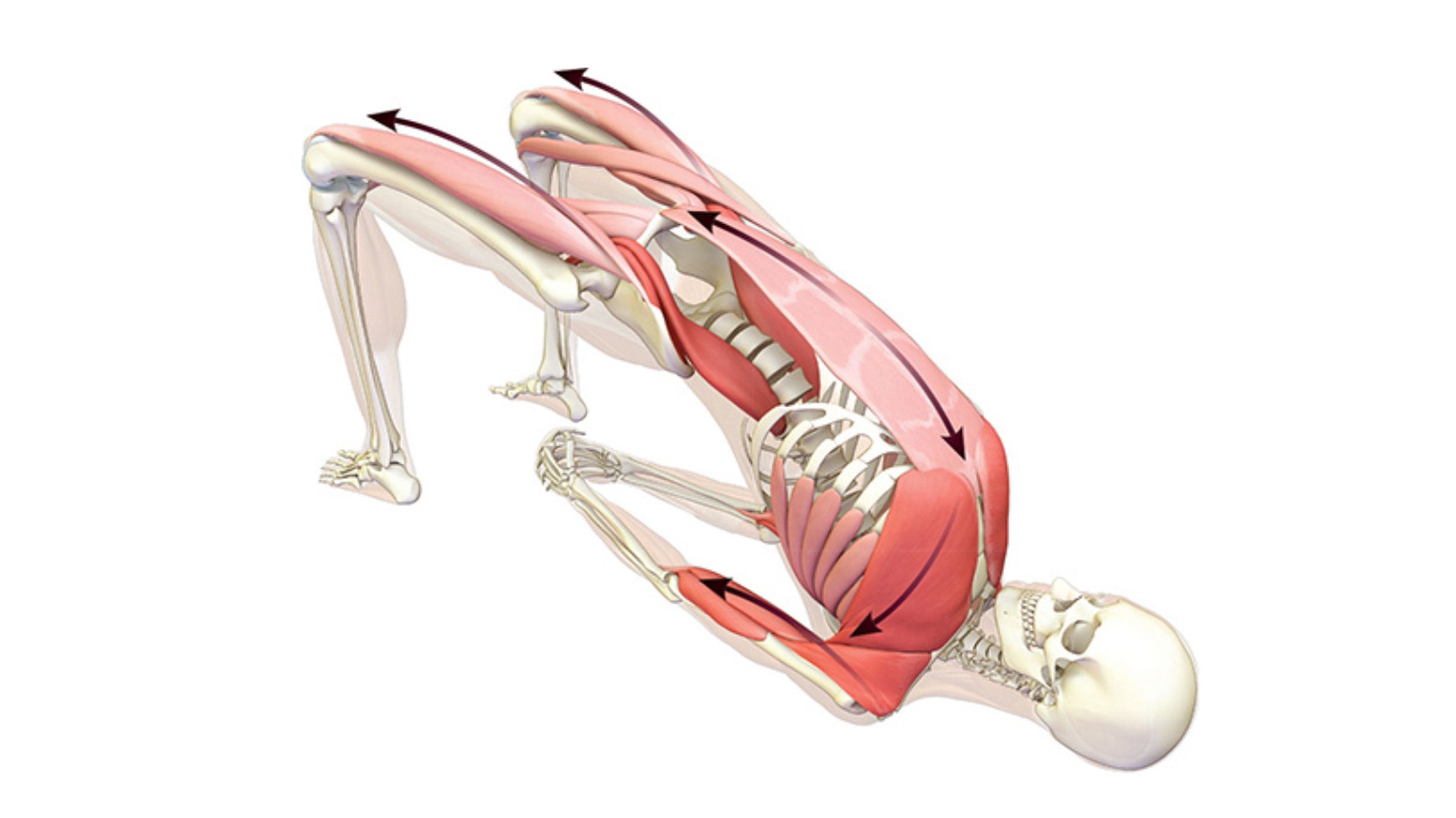
The pose moreover passively stretches the quadriceps alongside the doorway of your thigh and hip flexors of your larger thighs, along with the psoas and its synergists: the pectineusthe adductors longus and brevisand the sartorius. Moreover lengthened by this pose are the rectus abdominis alongside your abdomen, the pectoralis major your chest, the deltoids cloaking your shoulders, and the biceps on the doorway of your larger arms.
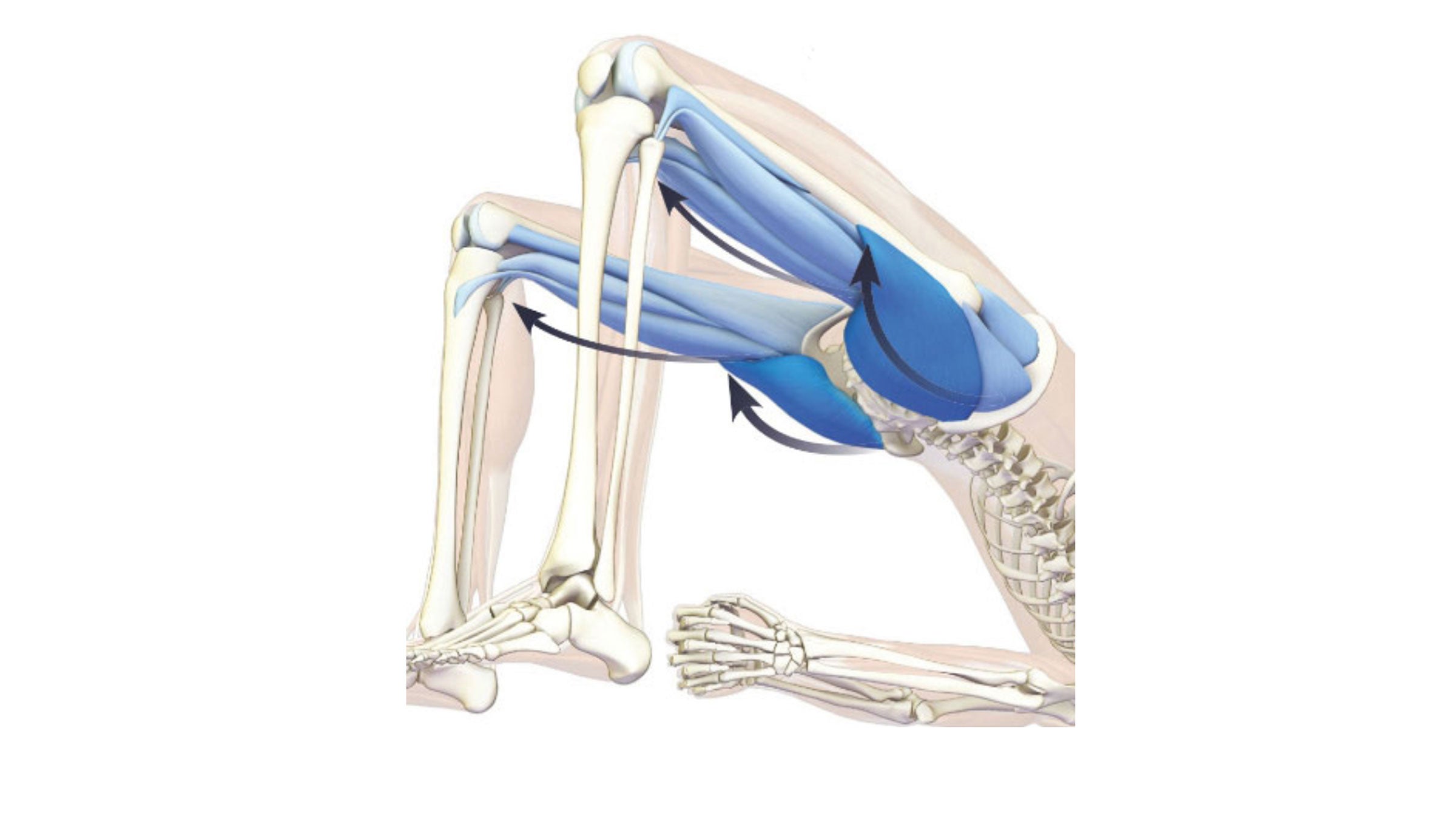
The contraction of the gluteus maximus and hamstring muscular tissues lifts the pelvis.
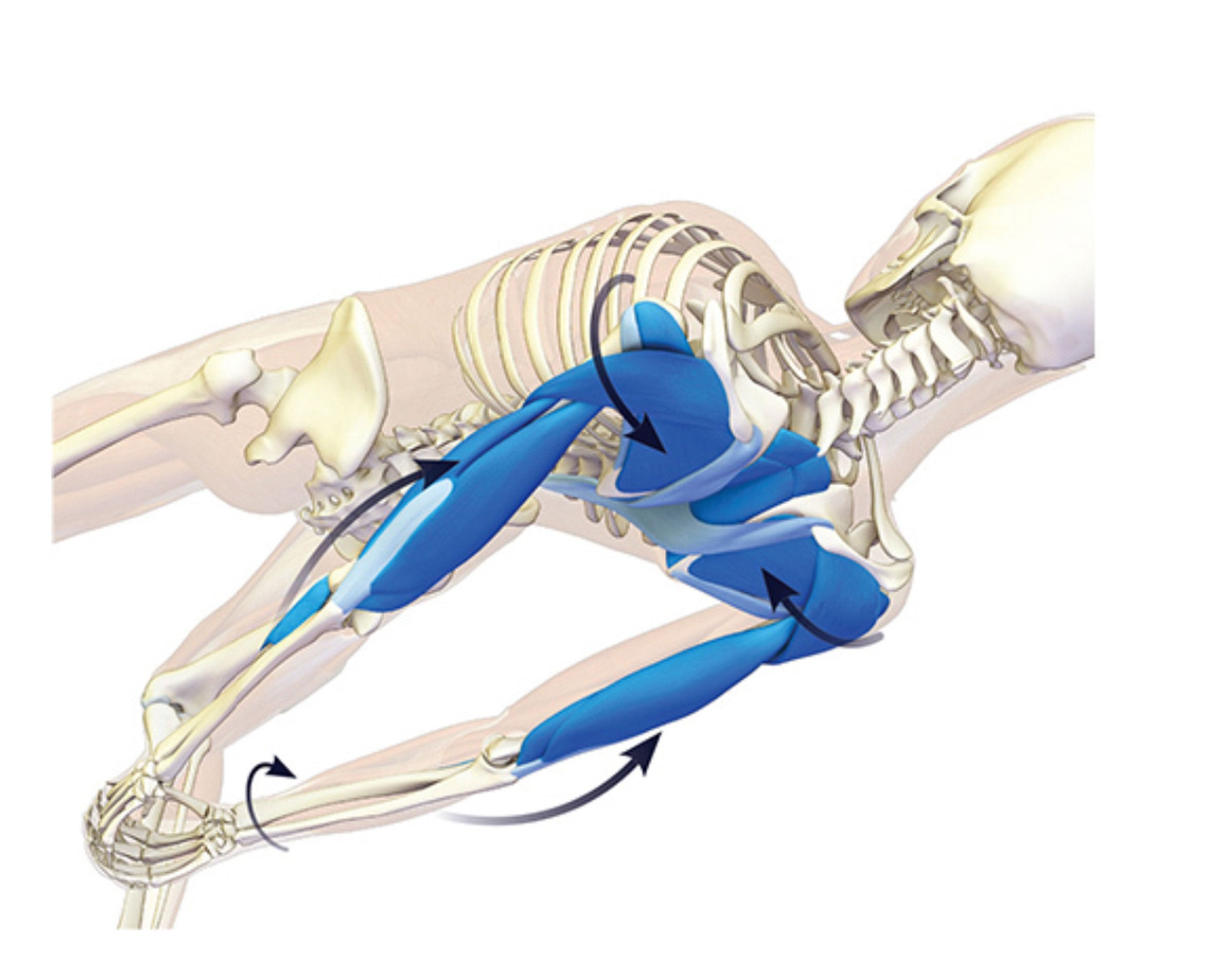
Contracting the triceps extends your elbows and straightens your arms. Interlacing your fingers and gently turning your palms upward supinates your forearms. Drawing your shoulder blades in the direction of the midline of your physique stretches the anterior serrated muscular tissues.
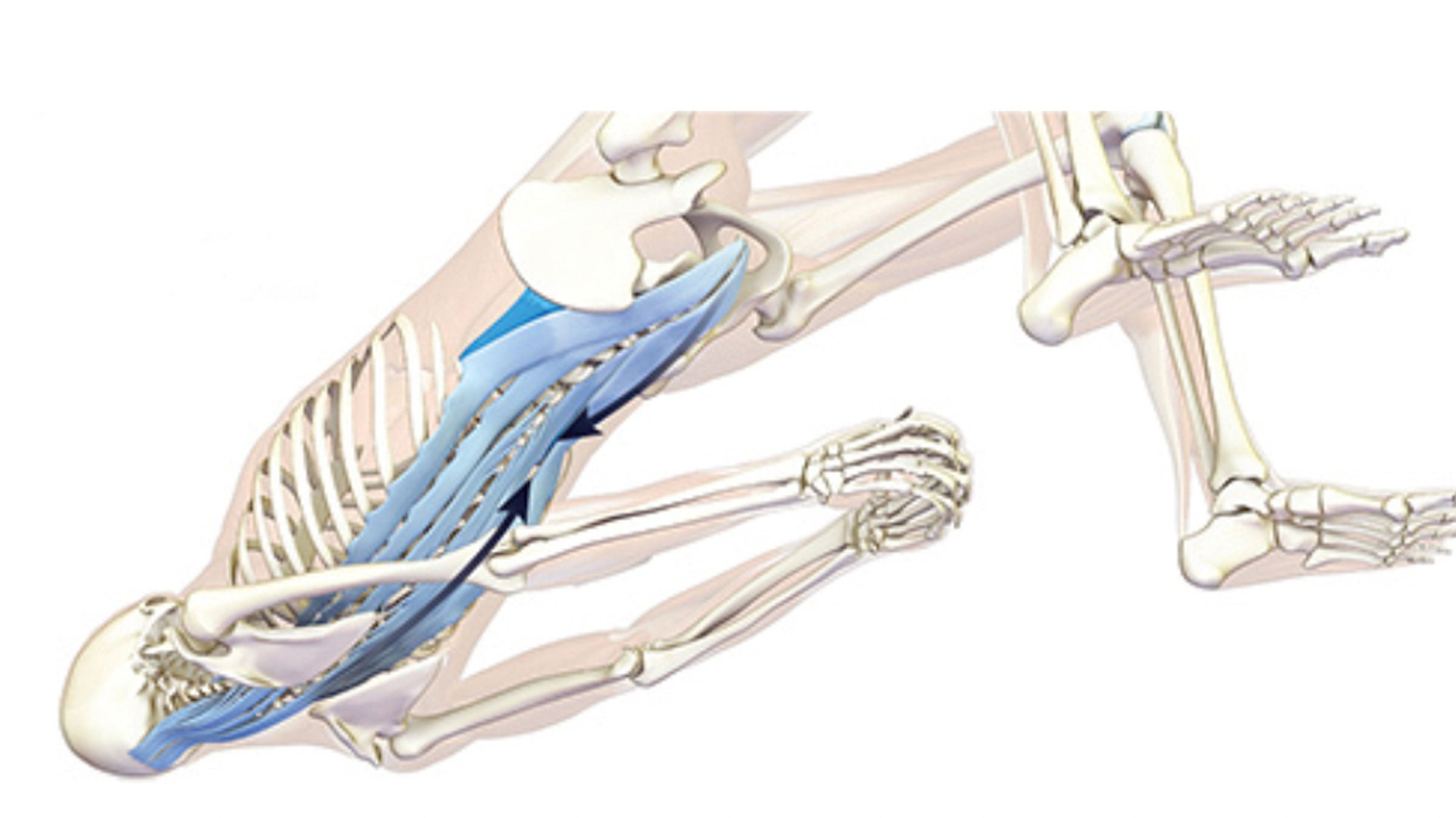
The contraction of the spine erector and sq. loins muscular tissues alongside the spine causes your once more to arch. Proceed to engage these muscular tissues along with the gluteals so the pelvis tilts into retroversion (backward) whereas the lumbar spine extends.
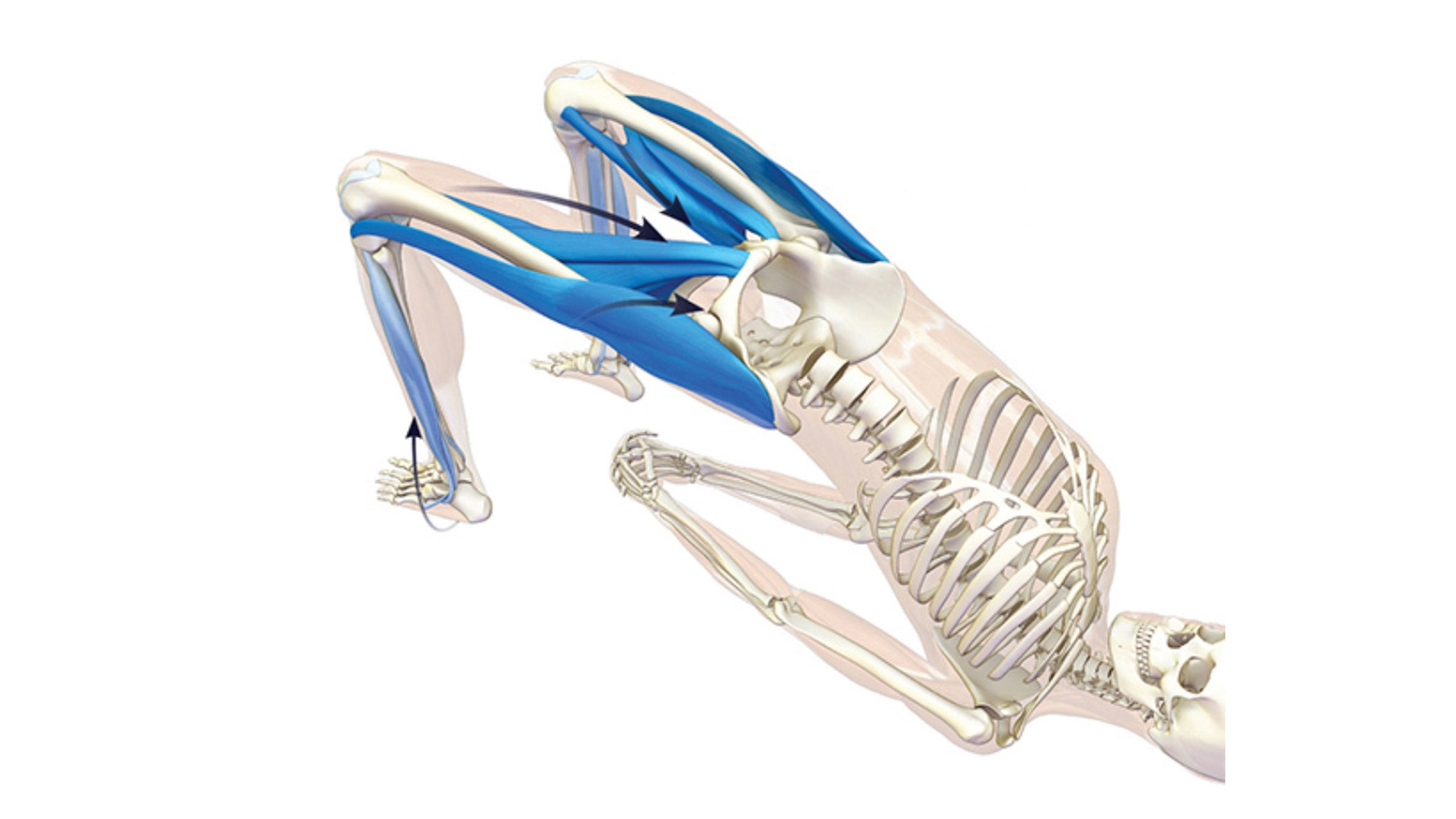
Draw your inside thighs in the direction of one another and barely down. Whilst you uncover the type of the pose, you can settle down the hamstrings and activate the quadriceps to deepen the pose. (On account of the quadriceps activate the knees, attempting to straighten your knees lifts your torso when your toes are mounted on the mat.)
Excerpted with permission from The Key Poses of Yoga and Anatomy for Backbends and Twists by Ray Prolonged.
Setu Bandha Sarvangasana in Observe
10 Yin Yoga Poses to Help You Overcome Fear
These Are the 9 Poses We Flip To When We’re Confused Out and Anxious
Head Off A Migraine Sooner than It Begins With These Yoga Poses
Related Type, Fully totally different Pose: Bridge, Camel, and Bow
Half divider
About Our Contributors
Coach and model Natasha Rizopoulos is a senior coach at Down Beneath Yoga in Boston, the place she offers classes and leads 200- and 300-hour coach trainings. A faithful Ashtanga practitioner for a number of years, she turned equally as captivated by the precision of the Iyengar system. These two traditions inform her instructing and her dynamic, anatomy-based vinyasa system Align Your Transfer. For additional information, go to natasharizopoulos.com.
Ray Prolonged is an orthopedic surgeon and the founding father of Bandha Yoga, a popular sequence of yoga anatomy books, and the Daily Bandha, which gives options and strategies for instructing and dealing in the direction of protected alignment. Ray graduated from the School of Michigan Medical College and pursued post-graduate teaching at Cornell School, McGill School, the School of Montreal, and the Florida Orthopedic Institute. He has studied hatha yoga for over 20 years, teaching extensively with B.Okay.S. Iyengar and totally different major yoga masters, and teaches anatomy workshops at yoga studios throughout the nation.






